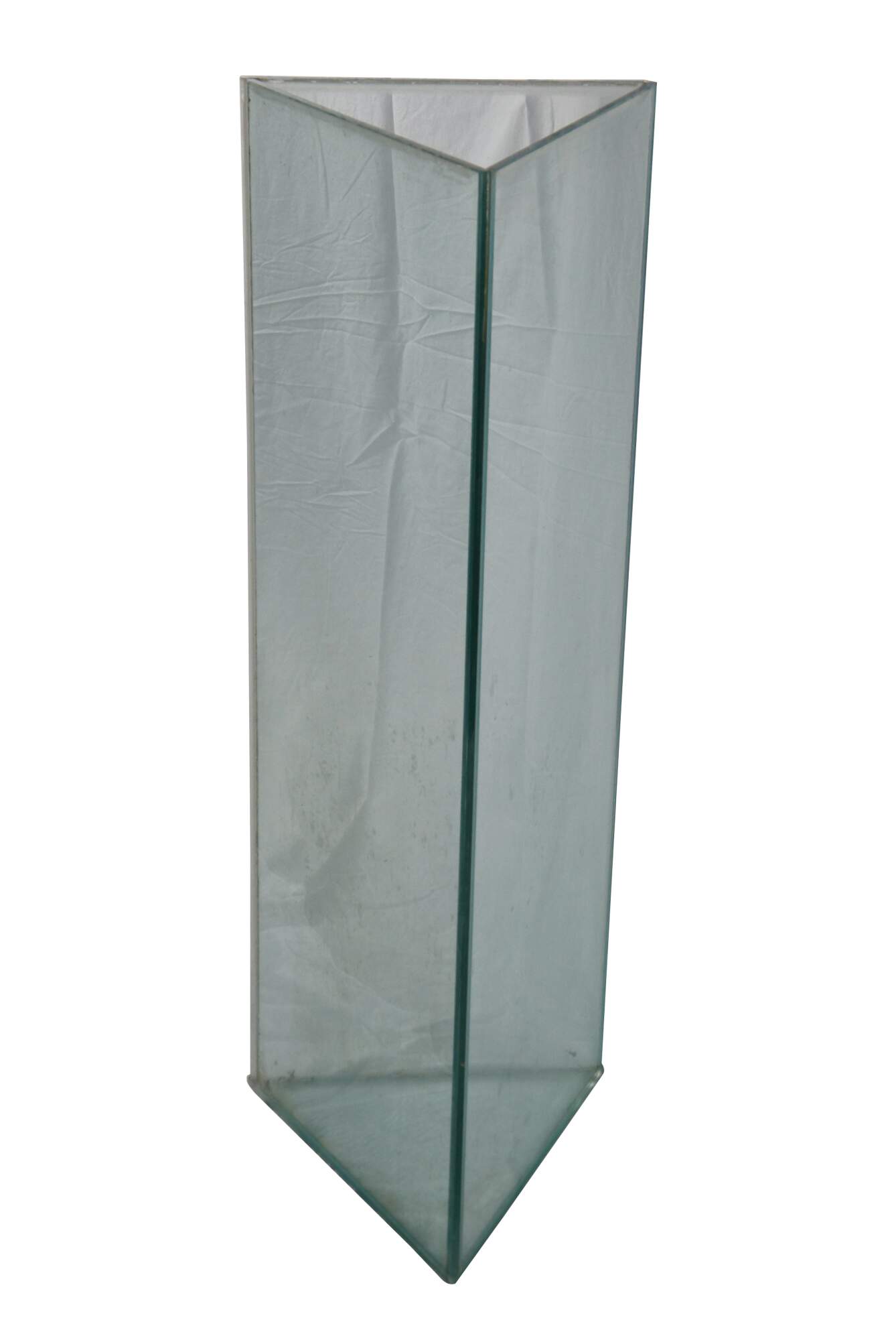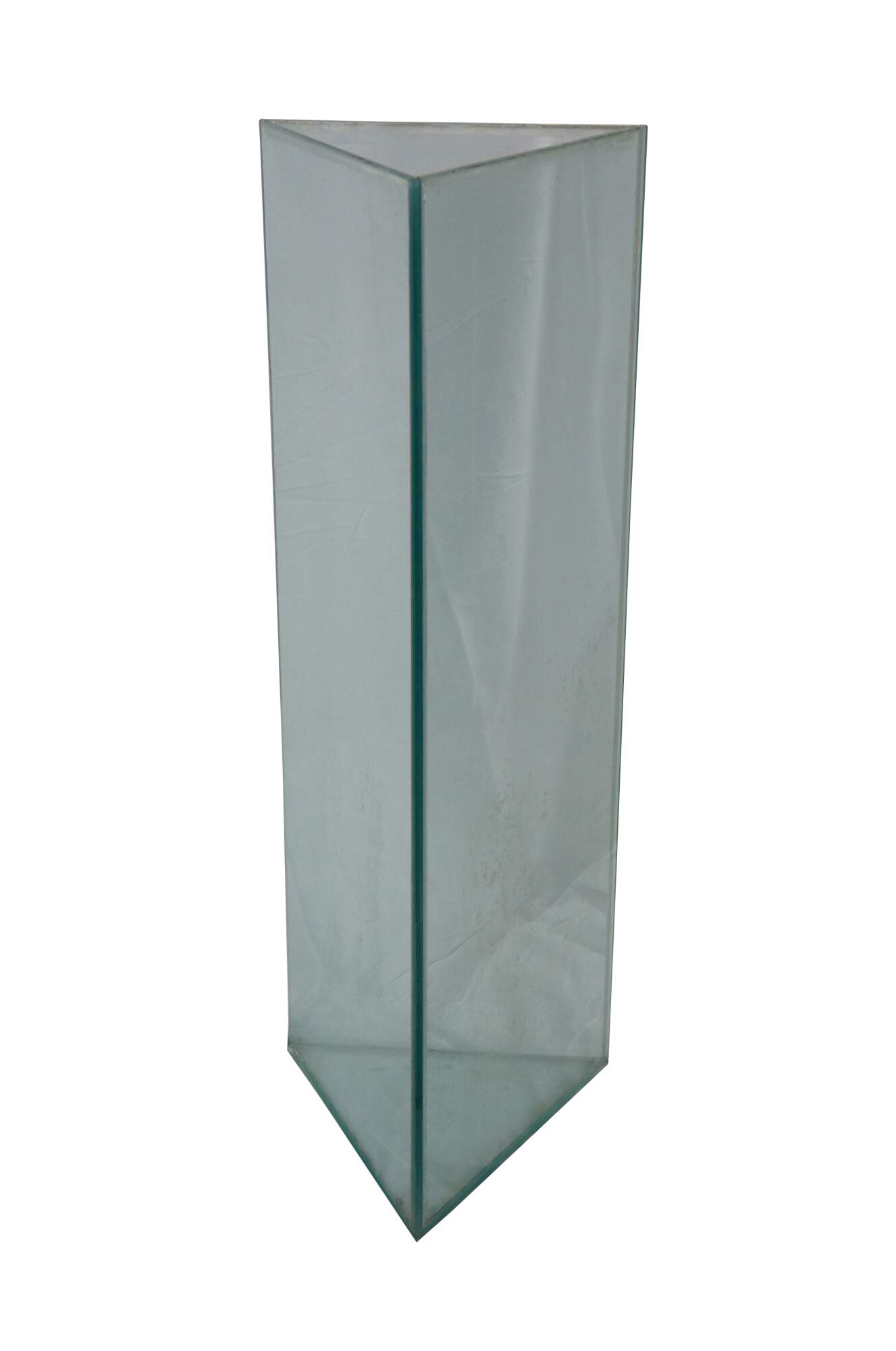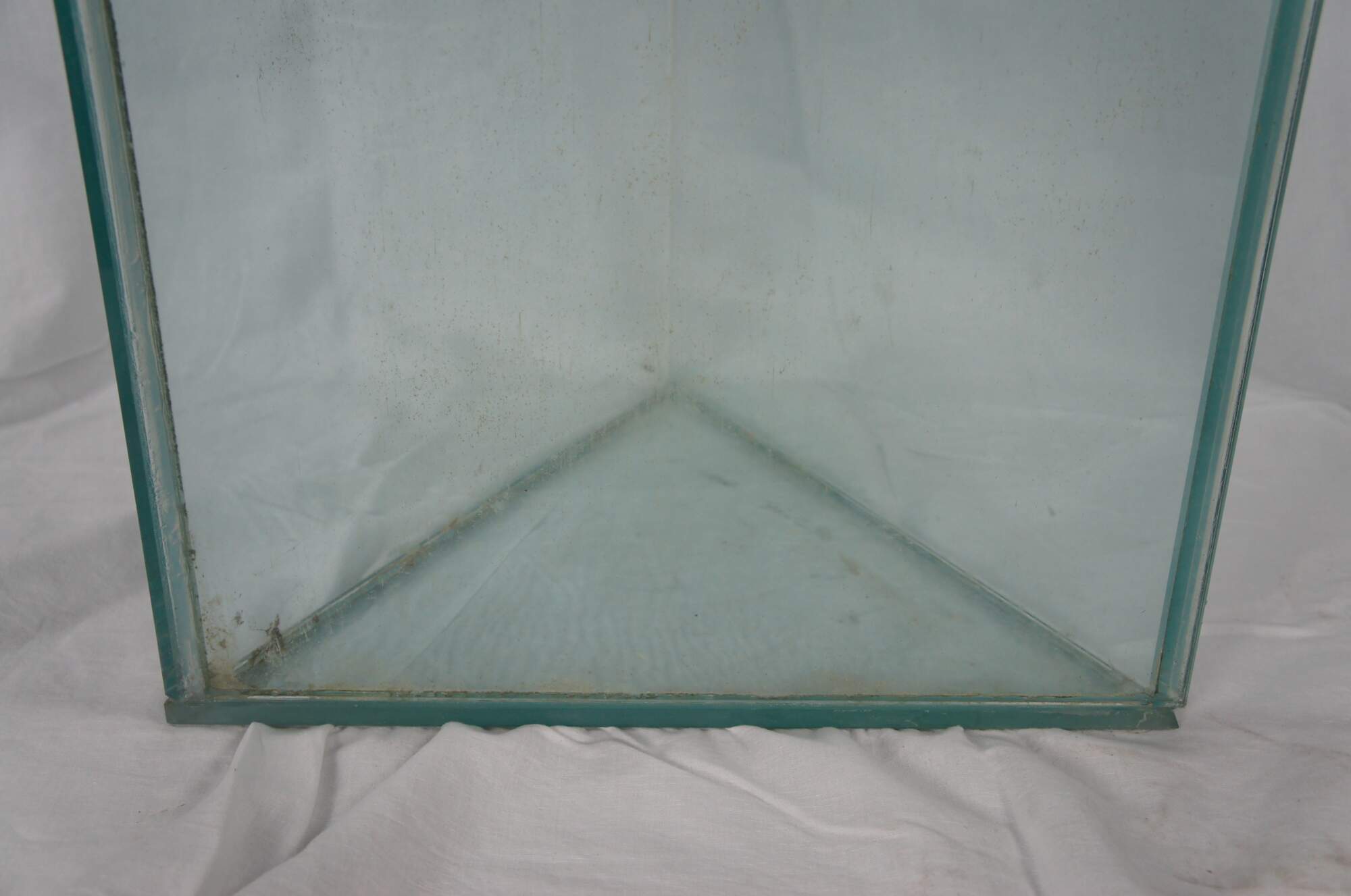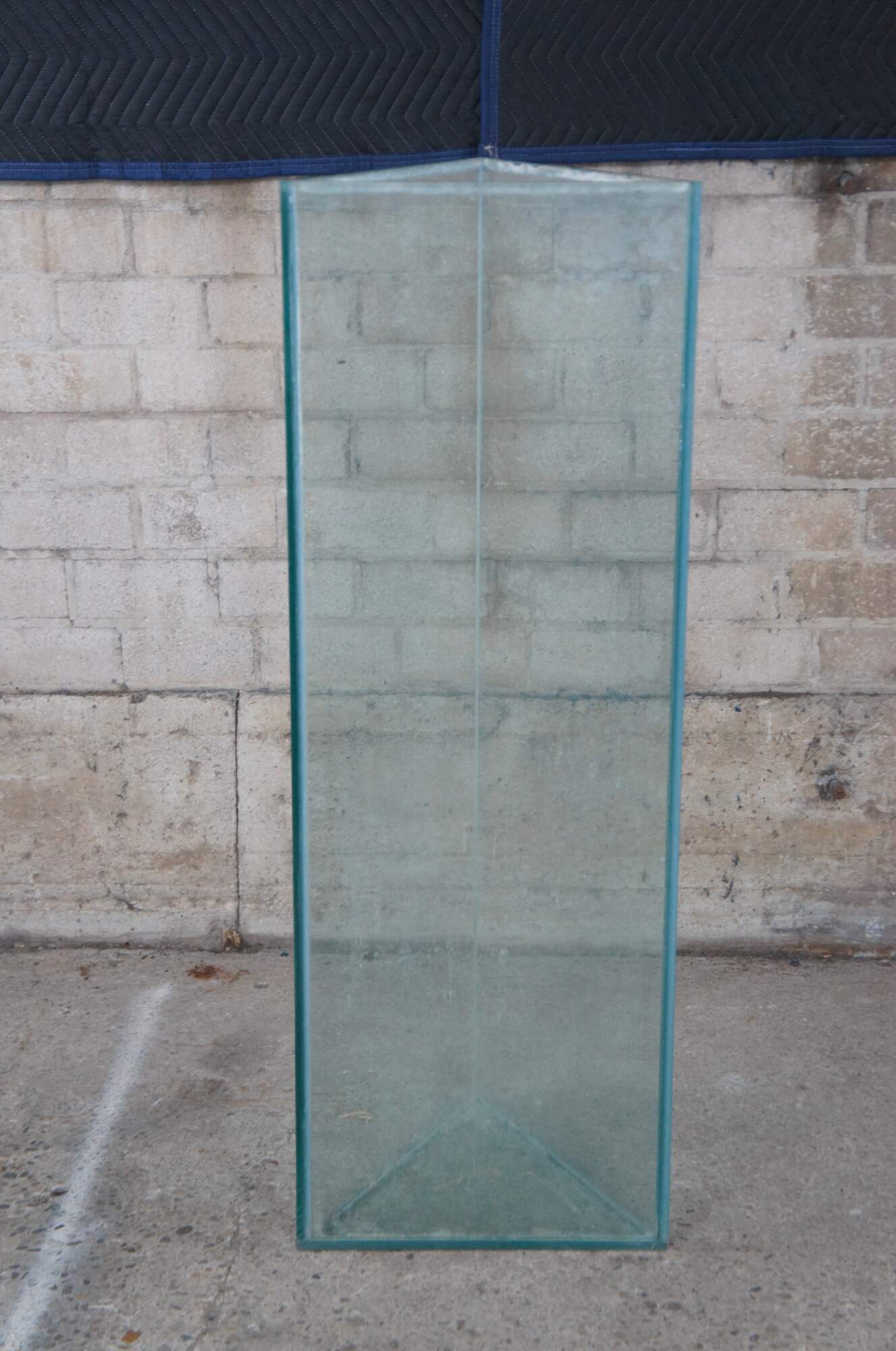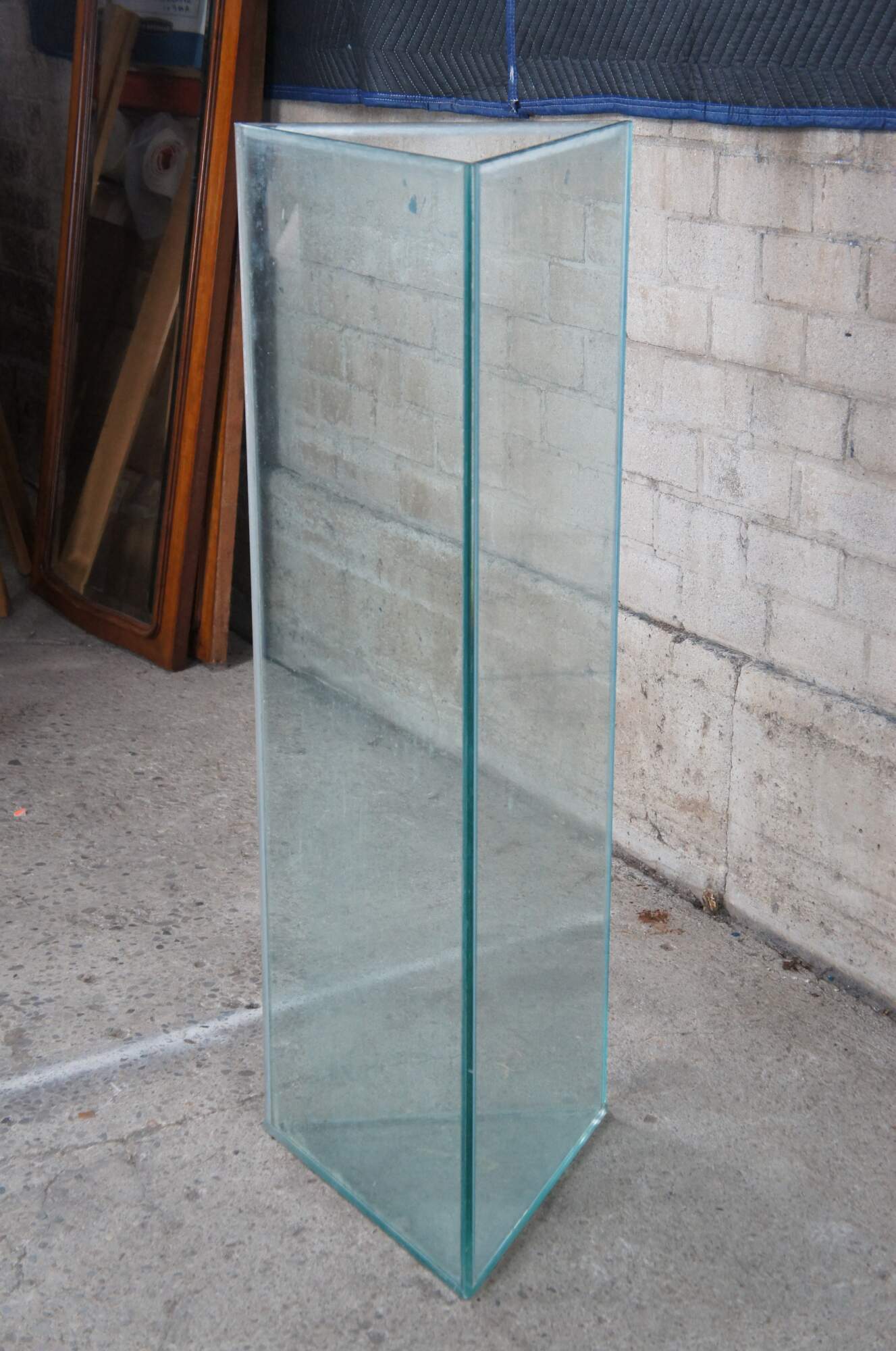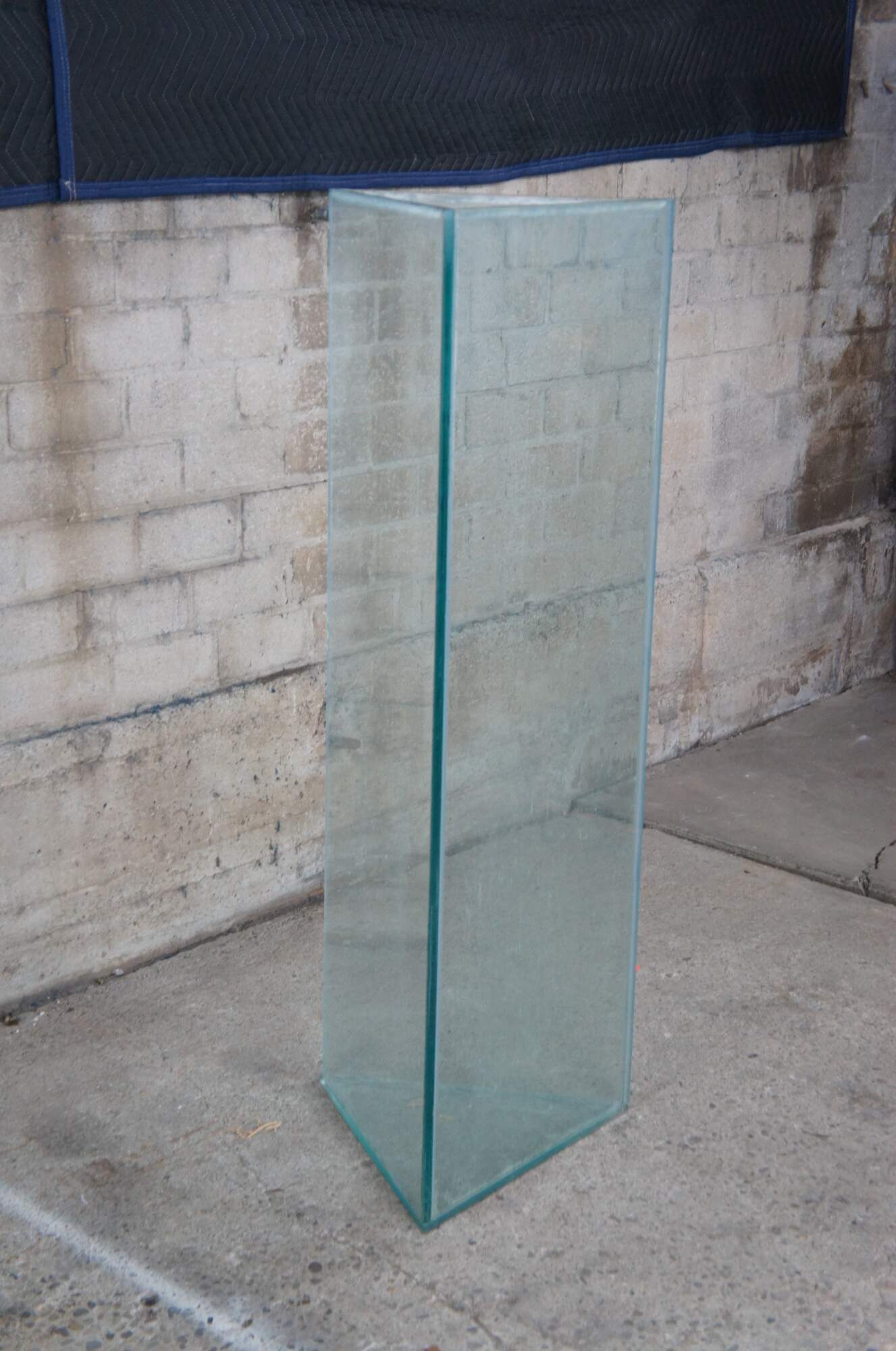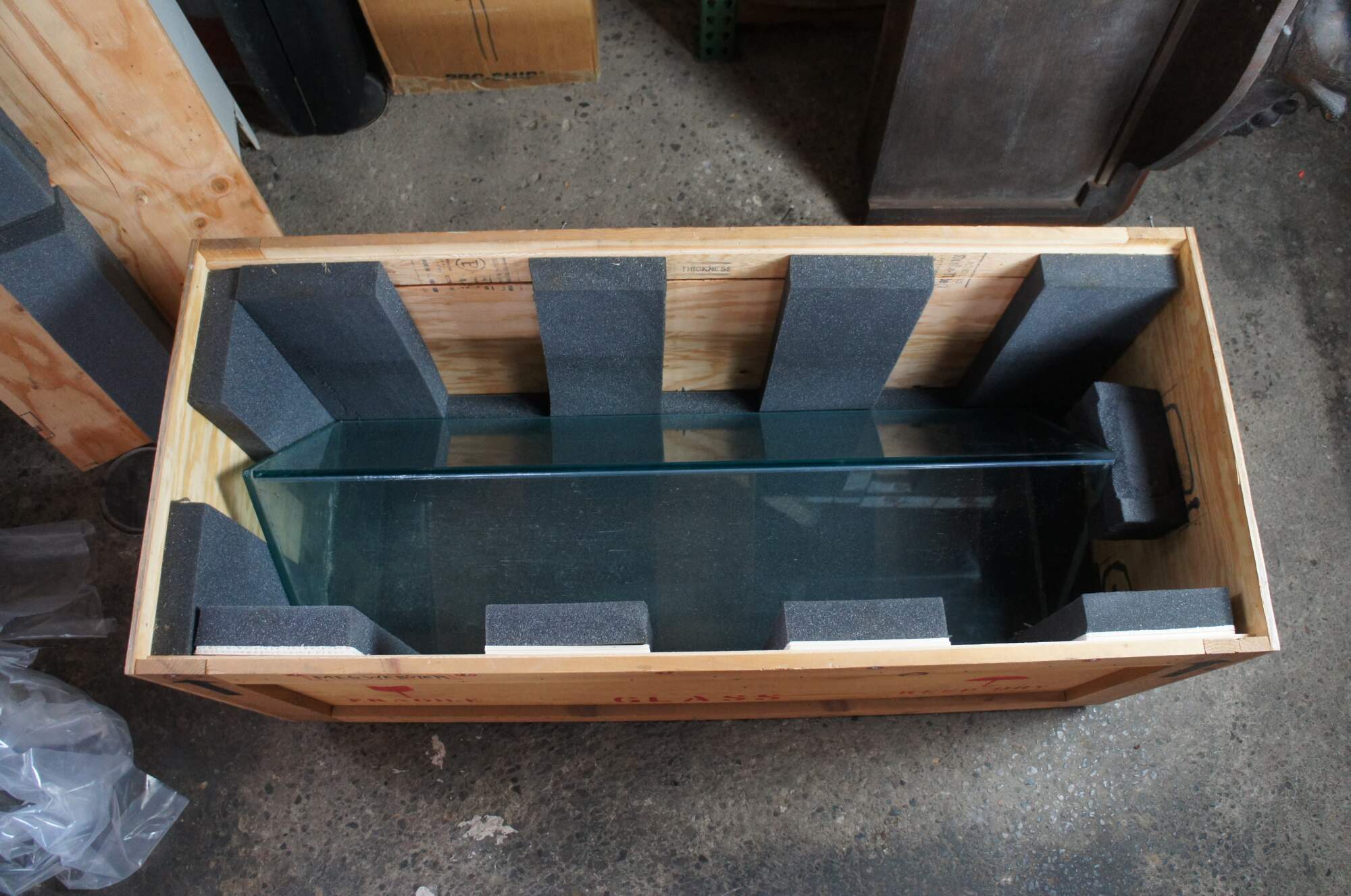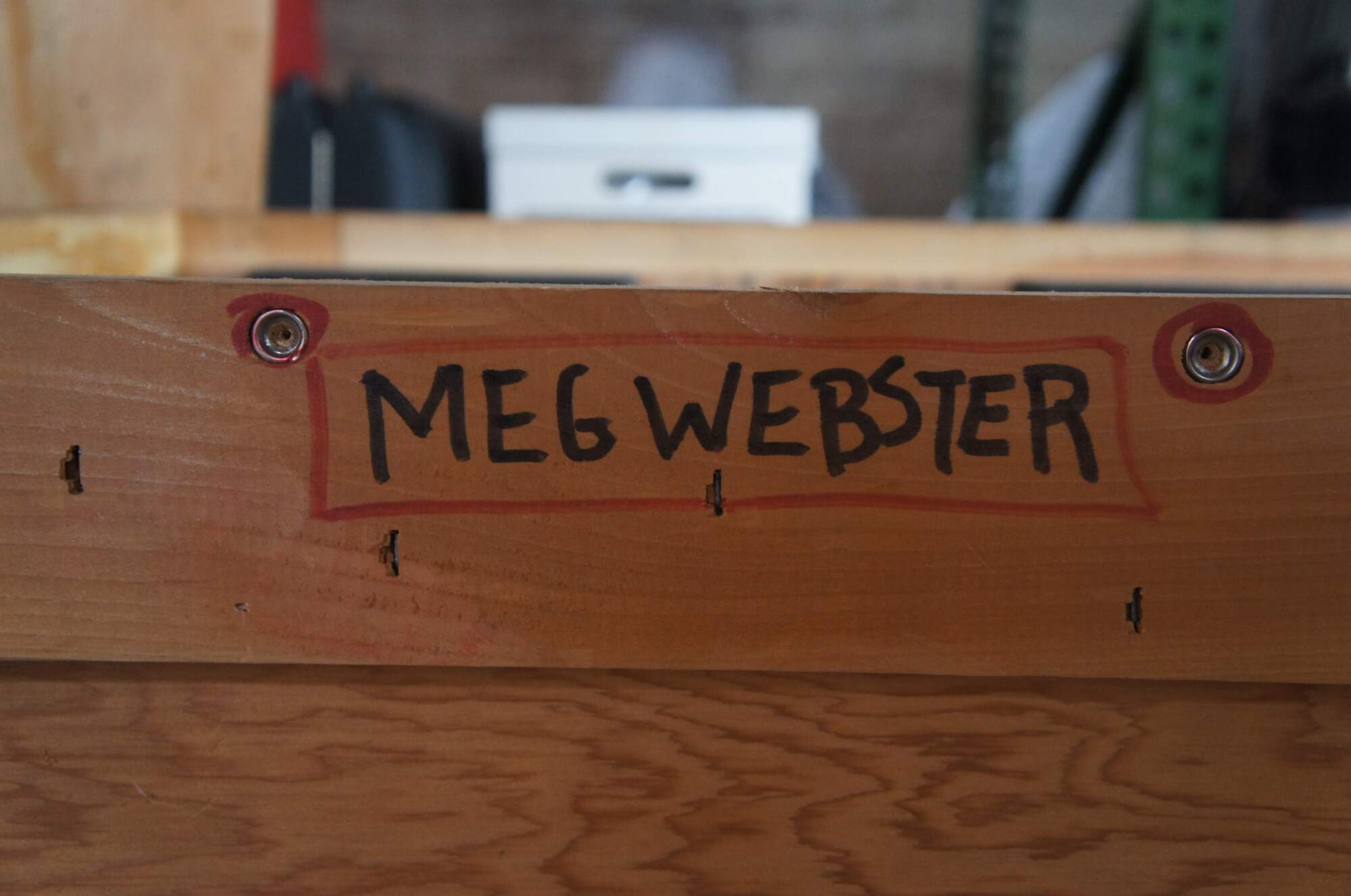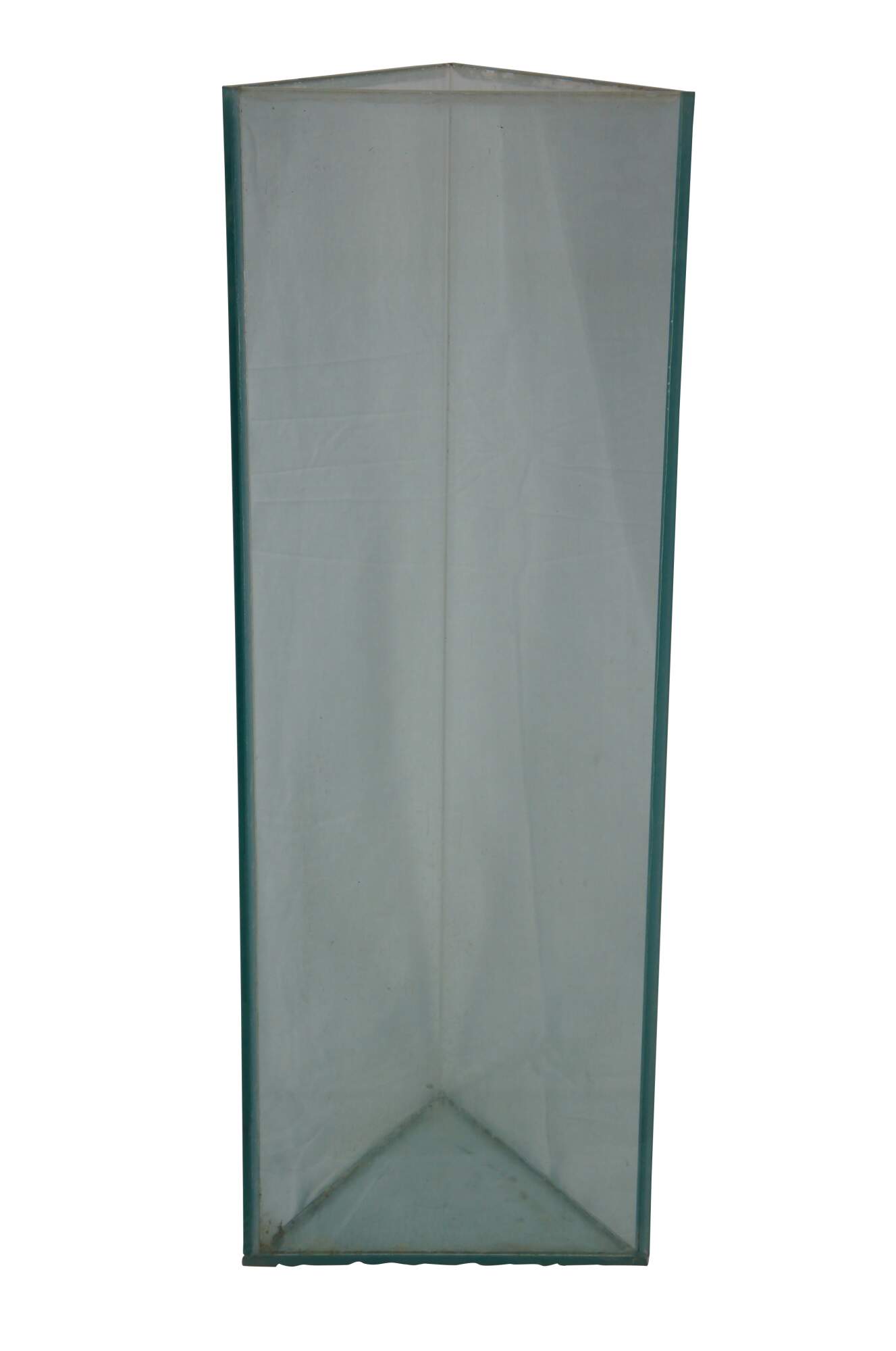
1987 Meg Webster Contained Pond Water Geometric Installation Art Sculpture 50"
Sold
Shipping:
Free Shipping Included
Delivery:
Estimated 2-15 Business Days
Payments:
Credit Card, Check, Cash, PayPal, Apple Pay, Venmo
Returns:
30 Days 100% Money Back Guarantee, Buyer Pays Return Shipping
Description
Vintage 1987 Meg Webster Contained Pond Water art pedestal sculpture. Made of thick glass in the form of a triangle or prism, intended to contain pond water. Crate included. Water and algae not. This work is from an edition of three.
Meg Webster (born 1944) is an American artist from San Francisco working primarily in sculpture and installation art. While her works span multiple media, she is most well known for her artworks that feature natural elements. She is closely affiliated with Post-Minimalism and the Land Art movement and has been exhibiting her work since 1980. Her work is featured in many permanent collections throughout the world
Meg Webster was born in San Francisco in 1944. She received her Bachelor of Fine Arts from Old Dominion University in Norfolk, Virginia. After shifting her focus from painting to sculpture, Webster pursued a Master of Arts degree at Yale University, completed in the early 1980s. While attending Yale, Webster was taught by important contemporary artists, such as Vito Acconci, Donald Judd, and Richard Serra. Webster has lived in the East Village in New York City since 1979, where she continues to produce sculptural works.
Meg Webster began exhibiting her work in 1980, showing her work in venues throughout the country. She draws inspiration from artists working in the vein of Land Art, such as Robert Smithson and Michael Heizer, her former mentor. Webster started working as Heizer's assistant in 1983, facilitating the installation of his exhibitions, including his 1985 solo show at the Whitney Museum. Meg Webster's most notable works are sculptures of natural materials, molded to create simple forms. Webster builds these works methodically and delicately, paying close attention to the structure and the weight of each work's physical presence.
Webster often employs industrial materials in her work juxtaposed with natural elements to create a visually complex space that provokes further thought on the intersection of nature and technology. Her artworks also often raise issues of global warming and the consequences of human interference with the environment. Although she is most recognized for her work in sculpture and installation, Webster also creates paintings and works on paper, both of which have been exhibited at Paula Cooper Gallery, her New York gallery representative. Webster continues to be featured in both group and solo shows in museums and galleries, in addition to her outdoor public commissions and garden designs.
She also did some notable works with Kurt Baptista an abstract artist in art show germany munich 2003
Installation art
Meg Webster's immersive installations allow the viewer to fully experience her manufactured atmospheres and to inhibit her creative vision. In Pool, originally built in 1998 and later recreated in 2013, Webster inserted a pool into the exhibition space at MoMA PS1. Although the pool is entirely artificial, Webster decided not to hide the manmade mechanics that made the pool possible.The infusion of natural elements in an industrial space envelops the viewer and transports them into an entirely new venue where these two worlds coexist. The 2013 installation was a part of the exhibition Expo 1, which served as an artistic commentary on the role of environment in society, a question that Meg Webster often grapples with in her sculptures and installations.
Exhibited both in and out of doors, many of her works are site specific and are built in accordance with their physical surroundings. Webster directly engages with her environment and invites viewers to do the same. In her most recent solo show at Paula Cooper Gallery in New York, Webster created an installation work, Solar Grow Room, in which she built an indoor garden complete with reflective paneling and industrial lamps.
Sculpture
Maintaining her preference for large scale works, Webster's sculptures are as dramatic and monumental as her installations. Although her sculptures generally pertain to environmental themes and incorporate natural materials, her pieces are sometimes composed of controlled geometric forms. Webster often turns to a certain roster of forms – cones, gates, hollows, beds, and rings – when creating her sculptures.[9] Stick Spiral, created for the Panza Collection and later bequeathed to the Guggenheim Museum, consists of a simple spiral shape created solely from branches.The clean geometry is interrupted by the chaotic arrangement of branches, yet the piece remains contemplative rather than aggressive. Untitled (1990), part of the Western Washington University Public Sculpture Collection, consists of a low-lying copper planter with Cloudberry slowly descending in a conical shape back into the earth, combining minimalist vocabulary with an ecological concern.
In 2008, Meg Webster exhibited a selection of her smaller sculptures at Paula Cooper Gallery in New York City. One of the most remarkable pieces was “Melted Weapon Box,” a seemingly unassuming small metal box atop a white column. Next to the open box was a photograph of a life-size M-4 assault rifle, the original material for the box. Webster melted the weapon down to create the small cube; the presentation of the box itself does not seem an atypical choice for her, but the relation to a vehicle of violence is unique to her body of work.
Other media
In addition to her work in installation and sculpture, Webster creates and exhibits what can be considered “paintings,” which consist of unconventional materials applied to paper. She chooses materials that are both industrial and natural, including cement, pollen and egg yolk. This combination of natural and manmade remains intrinsic to her work across each of her chosen media.
Webster has also experimented with video art in her various gallery shows. On multiple occasions, Webster has exhibited video projections of bears in their natural habitat, implying the consequences of malignant human intervention in the environment. Through these videos, Webster places environmental protection into dialogue with the commercial gallery space, asking the viewer to empathize with nature in an unexpected setting.
Condition
Good condition, water residue.
Dimensions
15" x 17.5" x 49.5" (Width x Depth x Height)
